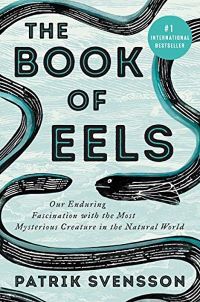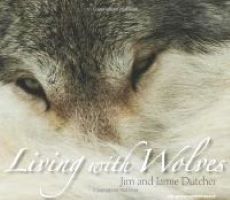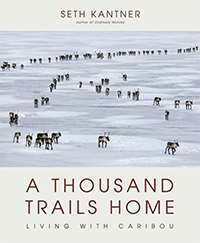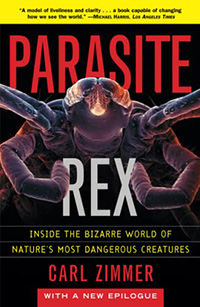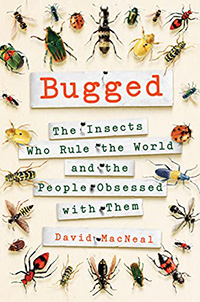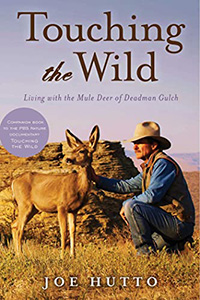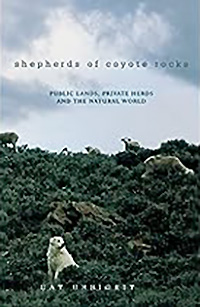The more I read about eels, the more fascinated I am. This book was published almost a decade after Eels by James Prosek, and yet it doesn’t add a whole lot to the eel’s story. Not to say there isn’t a lot of different information, and what was familiar was presented from different angles, so I found it intriguing all over again (plus I had forgotten plenty of details in the meantime). But in the end, the unanswered questions still remain. The eel’s birthplace remains at most a highly probably best guess, still nobody has seen two eels mating, or found adult sexually mature eels in the Sargasso Sea. If I read about this in the first book I had forgotten: that young Sigmund Freud spent a month dissecting hundreds of eels in search of one that had reproductive organs (eels don’t develop sexual organs until they’re on their final journey to the sea to mate). I read (probably again) about the man who tracked down the eels’ breeding ground, by following the leaflike eel larvae searching for smaller and smaller ones until he must be near their birthplace. Twenty years of searching. I read about how eels were among the foods that saved early colonists in New England from starving (even though nobody eats eel for Thanksgiving, they should!) About an eel that a kid tossed down a well, and apparently it survived there for a hundred and fifty years, alone in the dark, eating the occasional thing that fell in. Eels can have a very long lifespan. And what’s crazy is that they make their journey back to the sea, undergoing a final metamorphosis into an adult eel, at anywhere from four or five years to thirty, fifty, eighty . . . or more. So two eels that meet in the Sargasso Sea could be “all in the same developmental phase, the same relative age, if you will, and yet the oldest seven times older than the youngest.” There’s stories of eels caught in their young stages and kept in captivity, that stayed in that phase for years and years, never developing further.
There’s a lot of material in this book quoted from Rachel Carson’s Under the Sea Wind, which has a lengthy section about the life of an eel. And a passage reproduced and examined at length, from The Tin Drum by Gunter Grass, where the main character and his parents observed a man pull a dead horse’s head out of the water and extract eels from it. I found this passage very disturbing back then and disturbing now all over again! (In fact, a lot of that book was disturbing. It’s one I read in high school, the words captivated me and I was proud of reading a real dorstopper, but a lot of things in that book were rather repulsive, it’s one I kind of regret reading at all. However a lot of it also went way over my head, so not sure I can judge it fairly).
This book also has a lot of personal narrative, where the author describes fishing for eels with his father as a young boy, how their methods changed over the decades, and different details surrounding that. It was lovely, even though of course the eels die and get eaten. And the way they acquired a massive amount of worms to make a special kind of bait ball, was rather shocking!
Plus lots more facts and interesting stories and tidbits about the life and mystery of eels, of course. At the end, as is sadly the case with many books about wild animals that I read, is a chapter full of concern for indications that eel numbers are falling drastically, and it is likely this animal will go extinct before we even have understood it completely.
Borrowed from the public library.
